Exhibitions
Feminism and the Moving Image(2025.2.11–6.15)
Date
-Location
Gallery 4 (2nd floor)
About
In the 1960s and 1970s, the media landscape drastically changed with the pervasive adoption of television and the emergence of video cameras, leading artists to integrate these new technologies into their work. Meanwhile, social activism gained momentum around the world, with major protest campaigns including the civil rights and anti-Vietnam War movements in the US. During this era, feminism emerged in the US as a mass movement with broad support, challenging the prevailing male-dominated social structure as an increasing number of women called for equality both in the workplace and at home. This environment spurred female artists to articulate the challenges and injustices they faced. In contrast to the predetermined subjects and forms of traditional painting, video was a relatively open and underexplored medium that proved effective in challenging societal norms and the one-sided portrayals common in the mass media. In this exhibit, which continues from the previous term, we present video works from the 1970s to today that emerged against the above-described historical background. Please also note several keywords that serve to contextualize the works.
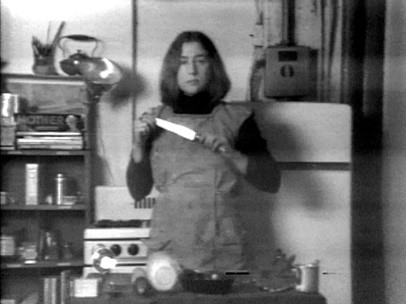
Courtesy Electronic Arts Intermix (EAI), New York
Key Term 1: The Personal
While 8mm and 16mm films require developing and printing after shooting, video does not require such processes. The immediacy of video led to the widespread staging of live performances that are shown on the spot as they are shot, as well as improvisatory filming practices. Video’s minimal gap between generation and completion of images allowed artists to engage with their images while shooting, resulting in works that incorporated everyday subjects and personal elements. At the time when Martha Rosler produced Semiotics of the Kitchen, televised cooking shows featuring female chefs were popular in the US, and Rosler’s critique of the framing of cooking as “women’s work” may have been a minority viewpoint. Nonetheless, this work continues to resonate across national borders and eras. In the US in the early 1970s, Idemitsu Mako began making video art influenced by the feminist movement and its slogan “the personal is the political,” producing works that derived source material from the everyday situations in which women found themselves. A medium that directly conveys individual voices, video also serves to question societal norms.

Courtesy Electronic Arts Intermix (EAI), New York
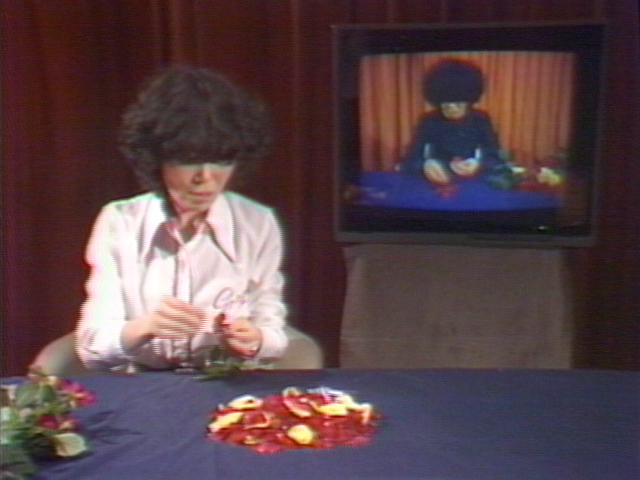
Key Term 2: Dialogue
The medium of video introduced a verbal element absent from painting, sculpture, or photography. In the works of Idemitsu Mako, parents’ unilateral utterances are depicted as oppressive and suffocating to the daughter, in stark contrast to “dialogue” in which the parties respect one another’s differing positions and opinions. In Love Condition by Endo Mai and Momose Aya, the two artists knead clay while engaging in a dialogue about “ideal genitalia.” Their differences of opinion and agreements lead to one twist and turn after another. In this work, dialogue unfolds not as a scripted scenario, but as spontaneous “chatting” including digressions, cross-talk, and laughter. Meanwhile, in Kimsooja’s A Needle Woman there is no spoken conversation, but we see a woman standing straight and immobile like a needle amid the hubbub of a city. Silent interactions between the woman and passersby who notice and gaze at her seem to represent unspoken dialogue between differing entities.

Courtesy Electronic Arts Intermix (EAI), New York
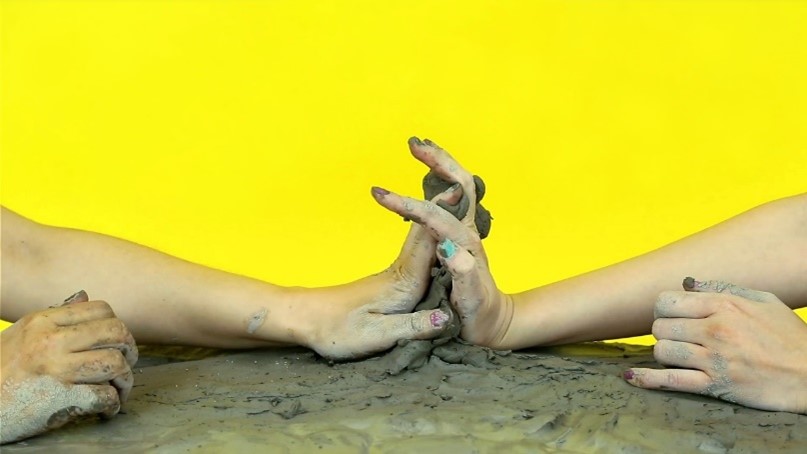
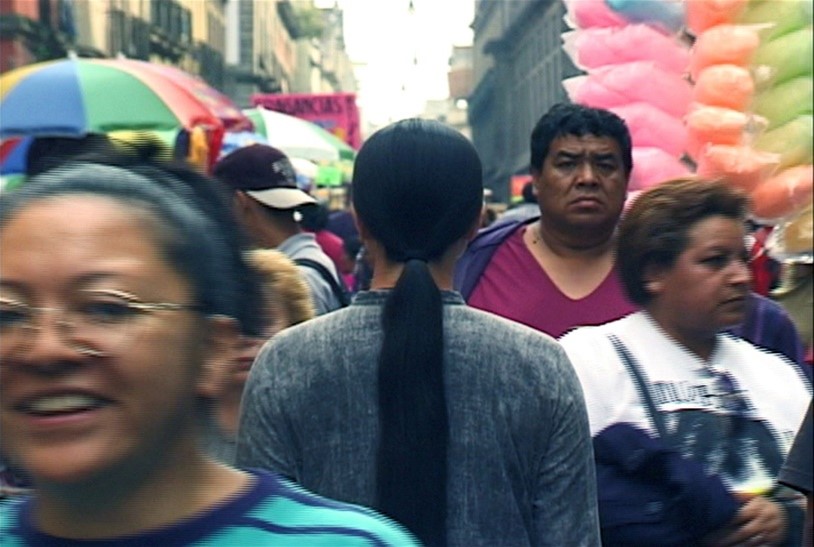
Courtesy of Kimsooja Studio
Key Term 3: Fragmentation of the Self
Idemitsu Mako adopted video as a medium in the early 1970s, inspired by the women’s liberation movement and its demands for gender equality. Over the next three decades she produced nearly 40 works, depicting constraints, conflicts, and opposition faced by women in various domestic and social situations. She also employed screens within screens in a manner that illuminates the divide between the real world and the inner world of the psyche.
Idemitsu’s Shadow Part 1 features women of various professions, with their shadows (representing negative aspects) displayed on a monitor. Great Mother (Harumi) illuminates the complex relationship between a mother and her daughter, who acts as her alter ego. Kiyoko’s Situation portrays a woman painter driven to desperation by the oppressive words and actions of her family and friends. This work is deeply rooted in Idemitsu’s own experiences in a highly patriarchal household, and her roles as daughter, wife, housewife, and mother. The sense that Idemitsu conveys, of entrapment and suffocation of the self beneath the expectations of society and family, still resonates with the realities of life in the 2020s.
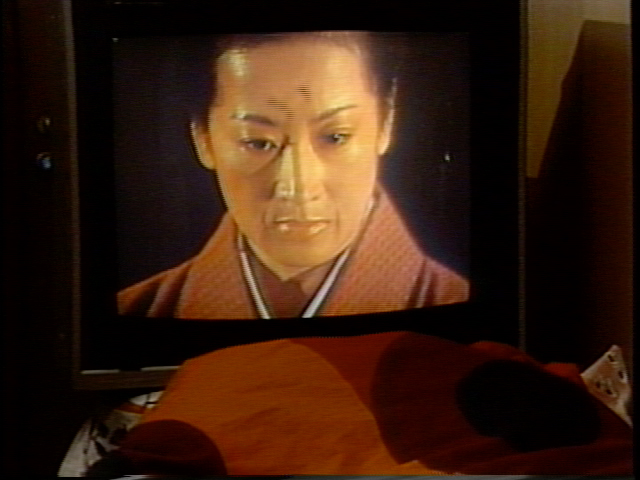
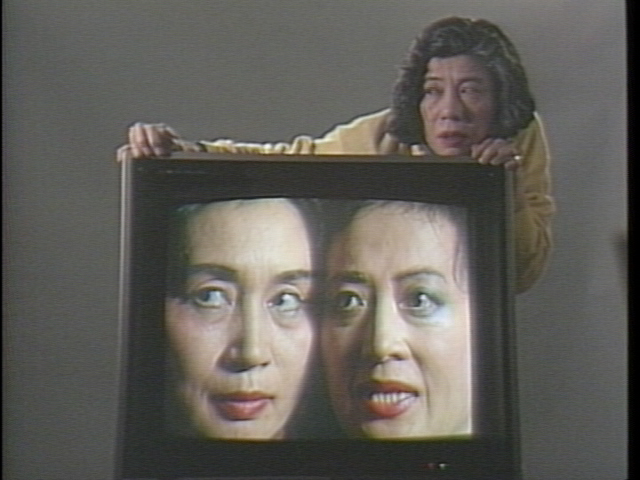
Hours & Admissions
- Location
-
Collection Gallery, the second floor (Gallery 4)
- Date
-
February 11–June 15, 2025
- Closed
-
Mondays (except February 24, March 31, May 5) , February 25, May 7
- Time
-
10 am–5 pm (Fridays and Saturdays open until 8 pm)
- Last admission: 30 minutes before closing.
- Admission
-
Adults ¥500 (¥400)
College & University Students ¥250 (¥200)- The price in brackets is for the group of 20 persons or more. All prices include tax.
- Free for high school students, under 18, seniors (65 and over), Campus Members, MOMAT passport holders.
- Show your Membership Card of the MOMAT Supporters or the MOMAT Members to get free admission (a MOMAT Members Card admits two persons free).
- Persons with disability and one person accompanying them are admitted free of charge.
- Members of the MOMAT Corporate Partners are admitted free with their staff ID.
- Including the admission fee for MOMAT Collection (4–2F).
- Discounts
-
Evening Discount (From 5 pm on Fridays and Saturdays)
Adults ¥300
College & University Students ¥150 - Free Admission Day
-
May 18 (International Museum Day)
- Organaized by
-
The National Museum of Modern Art, Tokyo


